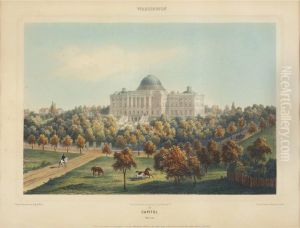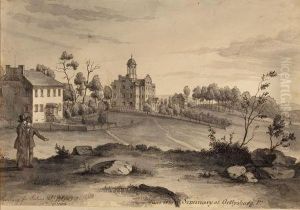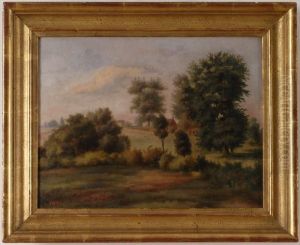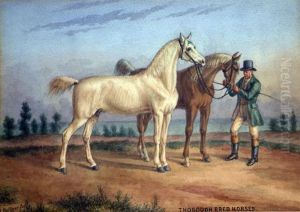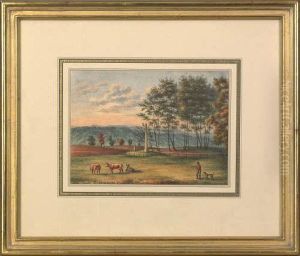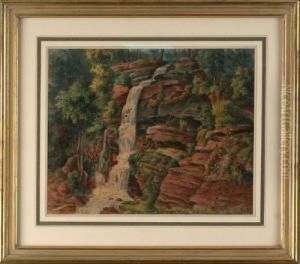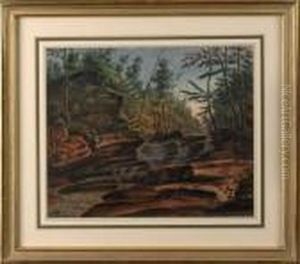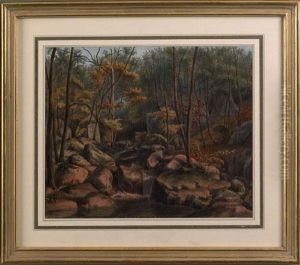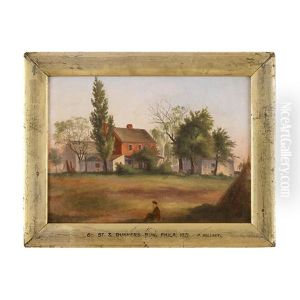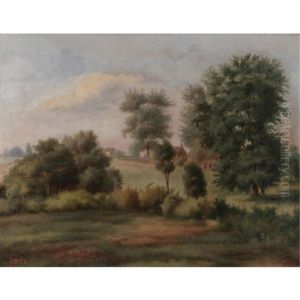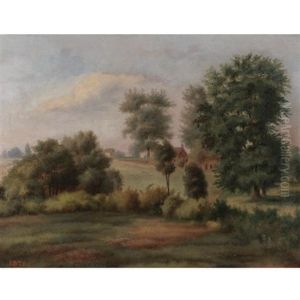Augustus Kollner Paintings
Augustus Kollner was a German-American artist known for his detailed prints and watercolors, particularly of American landscapes, cityscapes, and historical scenes. Born on November 15, 1813, in Stuttgart, Germany, he developed an interest in art at an early age. Kollner received his formal art education in Germany, where he honed his skills in drawing and watercolor painting.
In search of new opportunities, Kollner immigrated to the United States in 1839, initially settling in Philadelphia, Pennsylvania, which was a thriving center for artists and publishers at the time. His arrival in America marked the beginning of a prolific career that would span several decades.
Kollner quickly established himself as a skilled draftsman and watercolorist. He found work as an illustrator for various publications and also produced a significant number of independent works. Among his notable projects were detailed illustrations of American cities and landscapes, which were highly regarded for their accuracy and aesthetic appeal. His works provide a valuable visual record of the United States during the mid-19th century, capturing the essence of its urban and rural landscapes before the transformative effects of industrialization.
In addition to cityscapes and landscapes, Kollner also had a keen interest in documenting the daily life of Americans, including scenes of the frontier and Native American life. His illustrations offer insights into the cultural and social aspects of the era, making his work an important resource for historians.
Despite his success, Kollner remained relatively modest and dedicated to his craft throughout his life. He continued to create art well into his later years, adapting to changes in the art world and maintaining a consistent output of high-quality works. Augustus Kollner passed away on April 24, 1906, in Philadelphia, leaving behind a legacy as one of the prominent documentarians of 19th-century America through his art. His works are preserved in various institutions and collections across the United States, where they continue to be studied and admired for their historical and artistic value.



